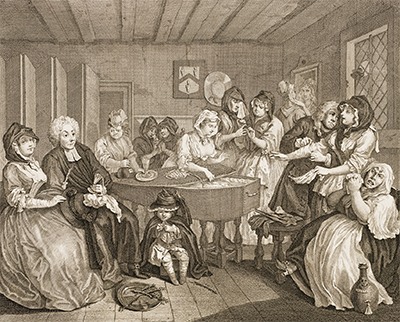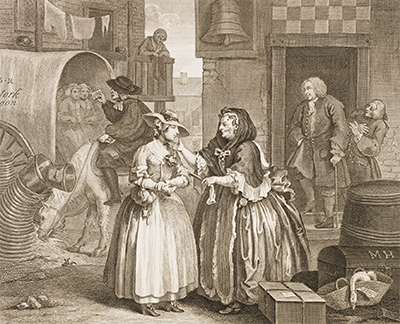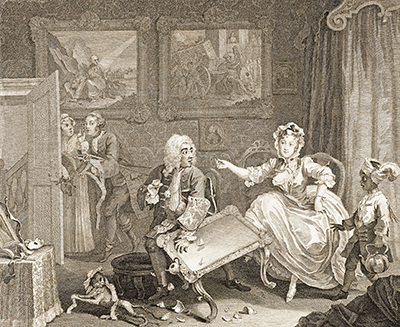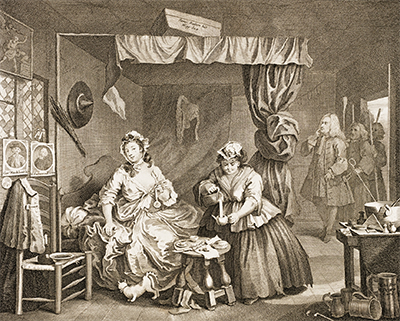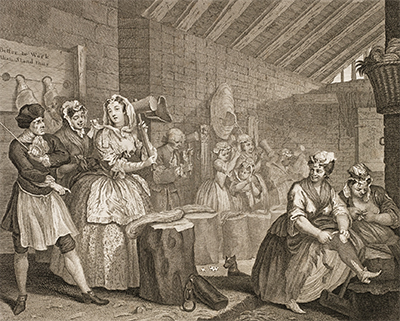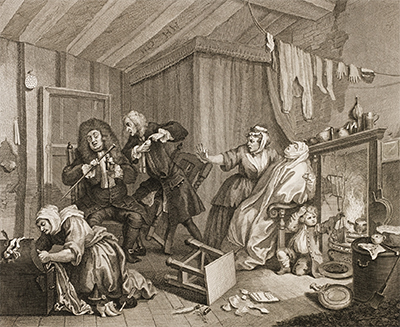A Harlot's Progress was a series of engravings (1732) and paintings (1731) in which artist William Hogarth tells the story of Miss Hackabout who moves to London and experiences a trying time.
Upon arriving in London from the country she encounters an older woman. In the first plate of the series you can see the older woman praising her beauty, while offering her a job. The second plate depicts Moll being a kept mistress of two lovers, however her luck soon turns as the third plate shows that she no longer being a kept mistress, but a common prostitute. Moll life does not appear to recover, and things go from bad to worse as plate four sees her beating hemp in Bridewell Prison and is followed by her untimely death of Syphilis in plate five. The series is completed by the final plate which is of Moll's wake.
This was one of Hogarth’s Modern Moral Series and was released after a crackdown on prostitution in London was underway. Many of the plate depict London society at the time and as Molls descent into the abyss began you can see the hopelessness of the company she was keeping, even after she was gone. This series give you pause for thought and admiration of the small idiosyncrasies that Hogarth includes in his work. The series of paintings were very popular and only 1240 sets were made. Due to the popularity of the series and limited number of sets available, pirate copies soon followed. Hogarth was aware of this and was able to procure a 1735 Act of Parliament to prohibit this.
As Hogarth was a trained engraver, this proved to be very beneficial for him and was very popular at the time. The process for engraving was to scratch or incise the design onto metal with a graver. The metal image would then be covered in ink and could be printed on separate sheets of paper. Harlot's Progress was later published by William Innell Clement in columns of his newspaper Bells Life in London #330 on 22nd June 1828.



